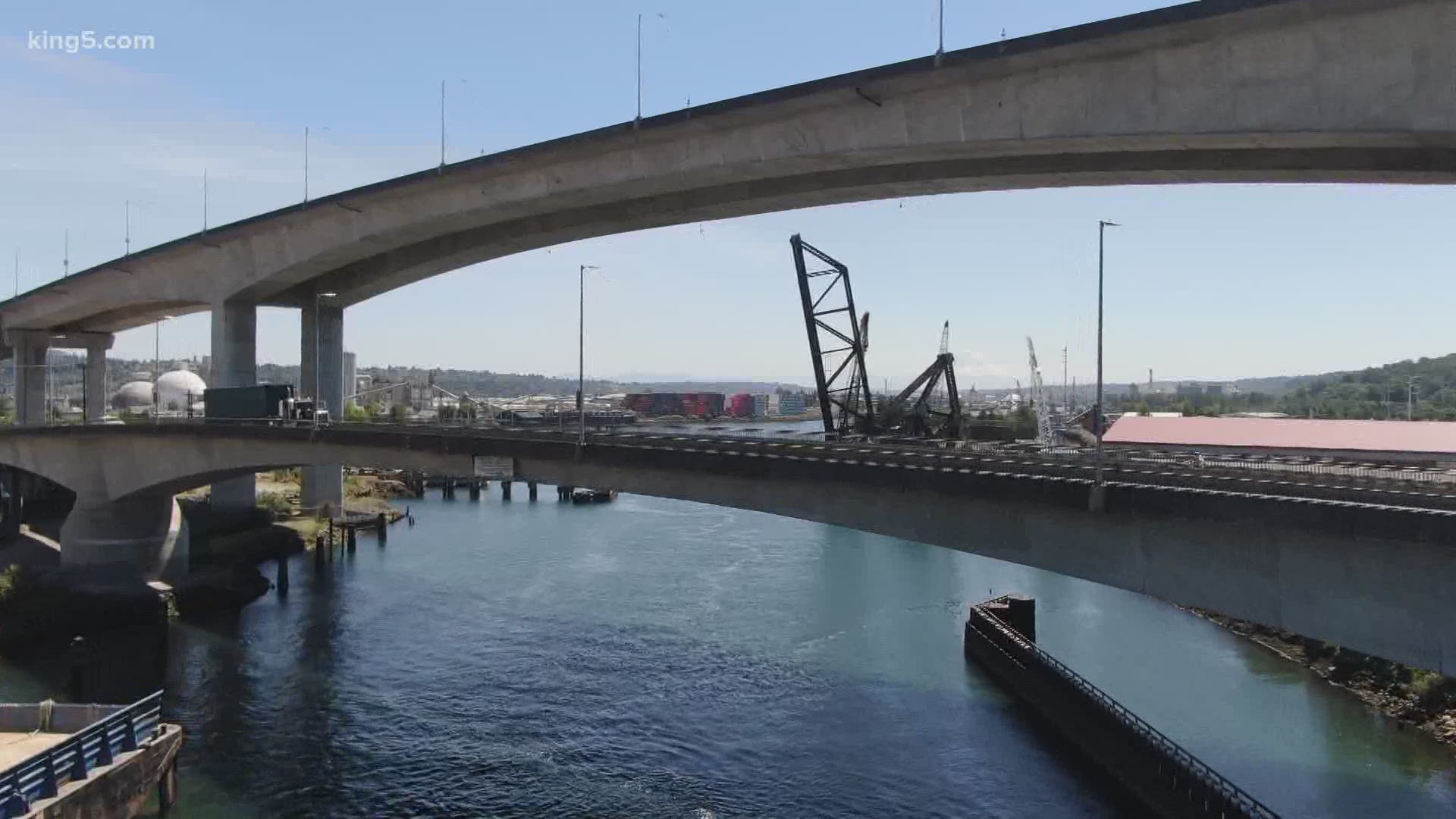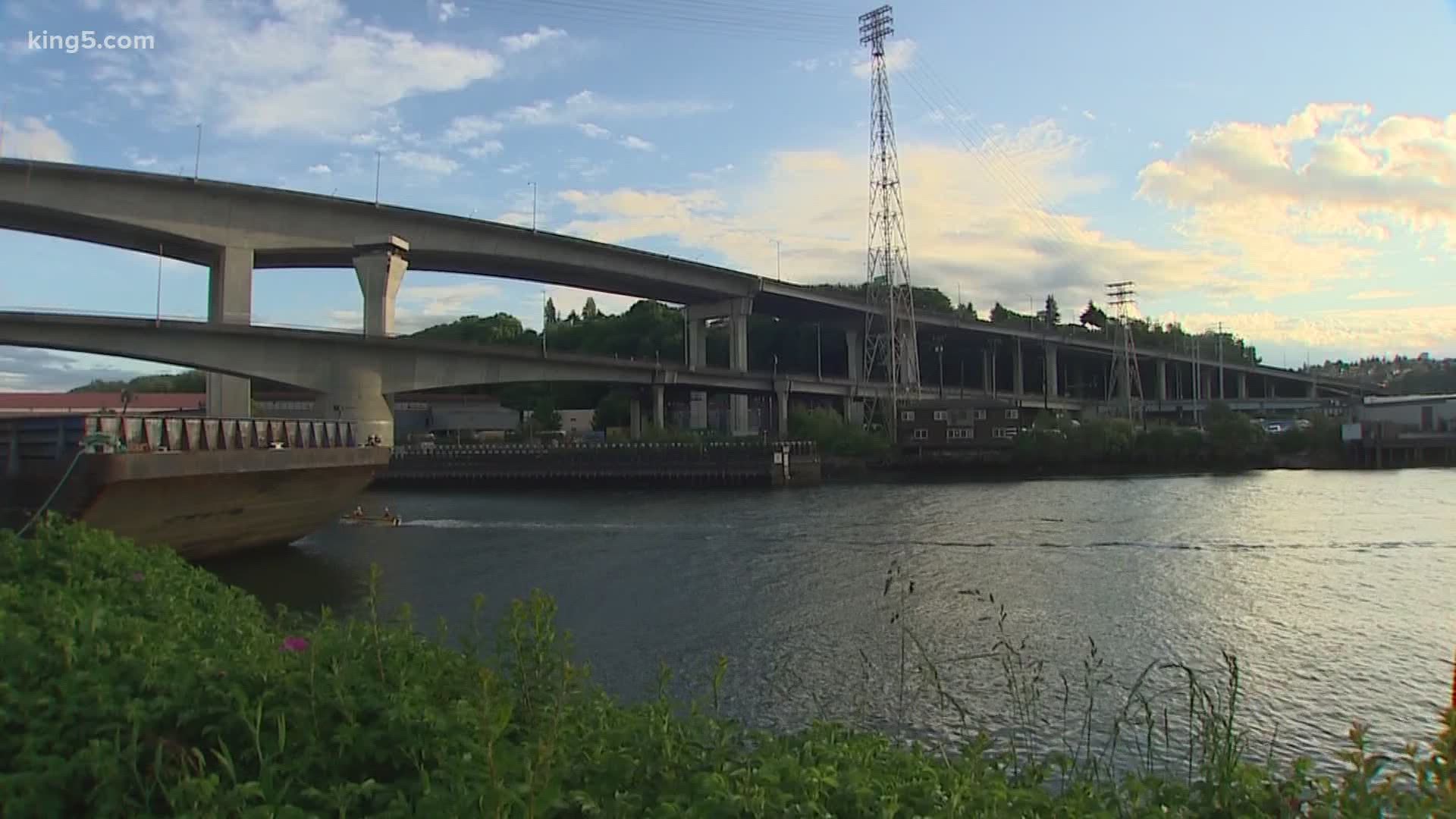The lower West Seattle Bridge isn't in imminent risk, but city officials said they aren't taking any risks with cracks that have formed.
Seattle’s transportation department says cracks found in the lower bridge to West Seattle are normal for a concrete structure. Still, the department will continue to monitor those cracks, and is planning to fill them, and wrap them with epoxy fabric to prevent them from growing.
The concern is amplified because the bridge next to it, the so-called high bridge, has been shut down since March, after cracks there rapidly expanded.
This week, the city is expecting to receive the final results from a technical advisory panel of expert bridge engineers that will give them the data to begin the process of making a cost-benefit decision on whether to fix the high bridge or replace it, along with formulating a timeline for that work to be completed.
The lower bridge is not open to general traffic for most of the day. That’s reserved for buses, trucks, especially those handling port traffic and emergency vehicles. In June, the city opened it to all vehicles between 9 p.m. and 5 a.m.
SDOT says especially when it comes to ambulances, the lower bridge is a lifeline between West Seattle and hospitals in downtown Seattle.
The agency says the cracks are only a few inches deep, and narrow.
Photos provided by SDOT to KING 5 show crack monitors inside the box structure of the bridge date back to 2019.
The lower bridge is actually in two sections, which move to allow ship and barge traffic, pivoting on two bases that come out of the Duwamish River.
Noting "all concrete bridges will eventually form cracks," the Seattle Department of Transportation (SDOT) said "small cracks" are being monitored and tested on the lower bridge to ensure its structural integrity is not compromised.
Heather Marx, who is director of downtown mobility for SDOT, is heading the city’s effort on both West Seattle bridges.
Marx says part of the reason more attention is being paid to the lower bridge is because of tougher federal bridge standards and having some of the nation’s top bridge engineers on hand to look at the high bridge, also taking a look at the lower one.
The cracks, according to the SDOT, are "only a few inches deep" and are not growing at the same rate that forced the department to shut down the upper West Seattle Bridge on March 23. The upper bridge is closed indefinitely as the city continues to plan for extensive repairs or demolition.
Because of that, the city has "fast-tracked" safety, maintenance, and strengthening measures, according to the SDOT.
"We have no reason to think that the Low Bridge is in any imminent risk, but because the bridge now plays such an over-sized role in our transportation system, we have developed a forward-thinking plan to strengthen it further and have been taking numerous precautionary steps to monitor and care for this bridge since the closure of the High-Rise Bridge," the SDOT said in a blog post published Tuesday.
In-person inspections are occurring at least once a month. An intelligent monitoring system was also installed on the lower bridge, tracking movement, and how the bridge reacts to traffic.
The city plans to reduce the speed limit on the lower bridge from 30 mph to 25 mph as well. The SDOT said reducing the speed limit on the bridge was already planned before the upper West Seattle Bridge closed as part of a citywide goal to reduce speeds throughout Seattle for public safety reasons.
Larger repairs are also being planned, including measures to reduce the impact of heavy vehicles.



